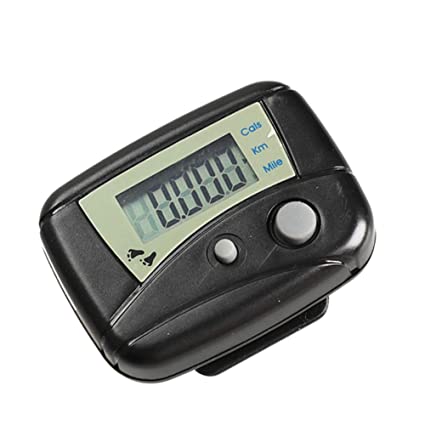DIFFERENCE AND MEANINBG OF PASSOMETER & PEDOMETER
A passometer and a pedometer are devices that are used to measure the number of steps taken by an individual. They are small electronic devices that are typically worn on the wrist or clipped onto clothing.
A passometer or pedometer works by detecting movement using a sensor, typically an accelerometer. The device tracks the motion of the wearer’s body and calculates the number of steps taken based on the movement detected. Some passometers or pedometers also measure other factors such as distance traveled, calories burned, and the number of floors climbed, depending on the device’s features.
These devices are commonly used as fitness trackers to monitor physical activity and promote a more active lifestyle. They can also be useful for individuals looking to achieve specific fitness goals or for those who are interested in tracking their progress over time.
The advantages of using a passometer or pedometer include:
- Encourages Physical Activity: A passometer or pedometer can motivate individuals to engage in physical activity and strive to reach daily step goals.
- Provides Motivation: Seeing progress towards a goal can be motivating, leading individuals to be more consistent with their exercise routines.
- Improves Health: Regular physical activity has numerous health benefits, including weight management, lower blood pressure, and reduced risk of chronic diseases.
- Convenience: Passometers and pedometers are small, portable, and easy to use. They can be clipped onto clothing or worn on the wrist, making it convenient to track steps throughout the day.
- Provides Data: Passometers and pedometers provide valuable data on physical activity levels, which can be used to make informed decisions about exercise and fitness goals.
- Cost-effective: Passometers and pedometers are relatively inexpensive compared to other fitness tracking devices, making them an accessible option for many individuals.
Overall, the use of passometers and pedometers can help individuals to lead a more active and healthy lifestyle by providing motivation, convenience, and valuable data on physical activity levels.
The key difference between a passometer and a pedometer is that a pedometer only measures the number of steps taken by an individual, while a passometer measures the number of steps taken, as well as other metrics such as distance traveled, calories burned, and the number of floors climbed.
A pedometer is a simpler device that only counts the number of steps taken by the wearer. It uses an accelerometer to detect motion and is typically worn on the hip or carried in a pocket. A pedometer can be useful for individuals who want to track their daily step count and set step goals to increase their physical activity level.
A passometer, on the other hand, is a more advanced device that provides a range of metrics beyond step count. It can track the distance covered by the wearer, the number of calories burned, and the number of floors climbed, among other metrics. A passometer is typically worn on the wrist like a watch and can be synced with a smartphone app or computer software to provide more detailed information on physical activity levels.
Here are the point-wise differences between a passometer and a pedometer:
- Features: A passometer measures the number of steps taken, as well as other metrics such as distance traveled, calories burned, and the number of floors climbed. A pedometer, on the other hand, only measures the number of steps taken.
- Wearable: A passometer is typically worn on the wrist like a watch, while a pedometer is worn on the hip or carried in a pocket.
- Sensitivity: A passometer is typically more sensitive than a pedometer and can detect smaller movements more accurately.
- Data Syncing: A passometer can be synced with a smartphone app or computer software to provide more detailed information on physical activity levels, while a pedometer usually does not have this feature.
- Price: Passometers are generally more expensive than pedometers due to their advanced features.
- Accuracy: Passometers are generally more accurate than pedometers in terms of measuring the number of steps taken and other metrics due to their advanced sensors and algorithms.
In summary, passometers and pedometers are both devices used to measure the number of steps taken by an individual. However, a passometer is a more advanced device that provides additional metrics beyond step count and is typically worn on the wrist. In contrast, a pedometer is a simpler device that only measures the number of steps taken and is usually worn on the hip or carried in a pocket.


